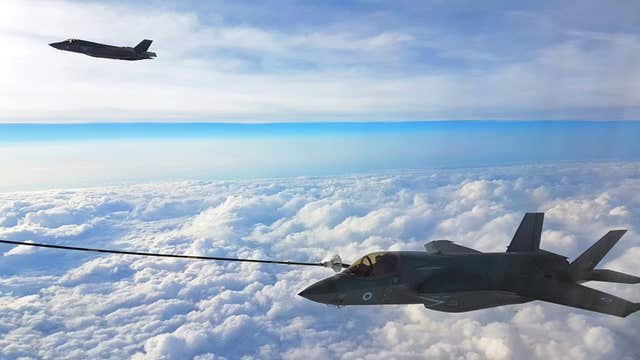China is on the verge of becoming a world-class submarine power, with new technology and a bigger, better fleet that is gaining on the U.S. and its allies—spurring a new undersea arms race in the Pacific.

Rapid improvements are making Beijing’s underwater navy quieter and faster, capable of carrying more advanced weapons and better sensors and able to remain submerged for longer.
At the same time, Beijing’s military has extended its reach deeper into the Pacific, confronting rivals in the South China Sea and performing blockade and invasion drills around Taiwan, where a conflict could demand a greater role for submarines than at any time since World War II.
That is pushing the U.S.—which stations about 60% of its worldwide submarine force in the Indo-Pacific—and its allies to bulk up their own underwater fleets.
“Pretty much every country that aspires to have a half-decent navy in the Indo-Pacific is building submarines, or acquiring submarines,” said Peter Jennings, a director at Strategic Analysis Australia and a former deputy secretary in Australia’s defense department. “There’s no doubt they are very useful.”
But the U.S. and its allies are facing stiff challenges in keeping up with China.
The U.S. is struggling to build new submarines. Facing production concerns, the Trump administration is reviewing the 2021 “Aukus” defense pact, an agreement intended to help deter Chinese aggression. Under the pact, Australia is meant to buy nuclear-powered submarines from the U.S. and work with the U.K. to build a new sub incorporating U.S. technology.
China until recently didn’t present such a challenge. For years, Beijing focused on building a fleet of diesel-electric submarines that were sufficient for patrolling its backyard in the Western Pacific. China’s first nuclear-powered submarine, which entered service in 1974, was a loud, slow vessel whose biggest threat was in exposing its crew to radiation.
After a half-century of slow progress, everything has changed.
“They could be on the cusp, for submarine operations, of a technological leap where they are able to quiet the submarines significantly and it becomes very hard to track them,” said Brent Sadler, a Navy veteran and senior research fellow with the Heritage Foundation.
China has made particular strides in the development of nuclear-powered submarines, whose greater speed, range and endurance give Beijing’s navy greater reach.
New models in development include the Type 095, which analysts expect to have vertical launch tubes that can accommodate cruise missiles. “The 095 is going to be a very quiet sub,” said Christopher Carlson, a retired captain in the Navy Reserve and former Defense Department naval systems engineer who researches China’s submarine program. “That’s going to complicate matters greatly.”
China has also improved its newer conventionally powered submarines, the Yuan class, with “air-independent propulsion” technology that makes them quieter and allows them to wait longer to come up for air. And China showed off new underwater drones in a military parade in Beijing on Wednesday, including one that could function as a submarine and another that could be an autonomous torpedo.
However, the development of a relatively small Chinese attack sub that analysts say could combine elements of nuclear and conventional power appeared to have been slowed when a prototype sank at a shipyard last year.
Overall, the U.S. still has a technological edge over China, with subs that are quieter and more advanced, and more upgrades to its all-nuclear fleet in the works.
Newly built Virginia-class attack submarines will be outfitted with acoustic improvements that make them stealthier. They also will have a larger payload capacity that will make them more lethal.
“We are making historic investments in our undersea warfare capabilities,” said Cmdr. Rick Moore, a Submarine Force, U.S. Pacific Fleet spokesman. The fleet operates underwater drones, has fixed and deployable underwater sensors and is incorporating artificial-intelligence capabilities in its submarines and unmanned platforms, he said.
With technological developments comes new strategic thinking.
If Beijing chooses to invade Taiwan, the self-ruled island that China claims as its own, the Chinese navy would likely use its conventional submarines to defend coastal territory. China’s newer nuclear attack subs, which are faster and equipped for longer journeys, would likely attempt to block U.S. forces from coming to Taiwan’s aid.
If the U.S. chooses to intervene on Taiwan’s behalf, the Navy could use its submarines to try to destroy China’s ships and hunt its subs.
The U.S. could also try to keep Chinese ships bottled up in the Taiwan Strait to stop China from encircling Taiwan. U.S. submarines could launch missile attacks against Chinese land targets and try to cut off Chinese supplies by blocking shipping lanes to the south.
“Submarines are very valuable because they are a relatively light-footprint way to project significant power,” said Jennifer Kavanagh, a senior fellow and director of military analysis at the Defense Priorities think tank who believes the U.S. should reduce its forces in Asia but supports deploying submarines to Australia. “They don’t require large numbers of U.S. personnel. They don’t leave aircraft and surface ships vulnerable to Chinese missiles.”
A war at sea in Asia could draw in submarines from a host of countries, a prospect that supports the wish for U.S. partners to build up their fleets.
Japan, South Korea, Singapore and Australia, even France and the U.K., could be drawn into a wartime alliance against China, their submarines taking on roles ranging from direct combat to defending shipping lanes and preventing Chinese access to resources.
Singapore recently ordered two more German-built submarines. The Philippines, on the front line of a territorial dispute with China in the South China Sea, has said it hopes to buy submarines as part of a multibillion-dollar military buildup.
When it comes to building submarines, Beijing has an industrial edge. China has the world’s largest commercial shipbuilding capacity, and already has the biggest surface fleet by number of ships.
It is also bulking up on conventional submarines, which are less costly and quicker to build than nuclear submarines. Despite their speed and endurance limitations, China knows “they need numbers, so they keep building a lot of them,” said Sadler.
President Trump has made building ships a priority, but limited capacity is a concern. The first of the ballistic-missile Columbia class U.S. submarines is expected to be delivered in 2029—approximately two years late. The U.S. plans a new class of ultra-advanced attack subs, called the SSN(X) for now, but it isn’t expected to start building them until the early 2040s.
Maintenance backlogs can keep U.S. subs out of action for years. In the 2023 fiscal year, 16 U.S. attack submarines were at a depot or idle, meaning only 67% of the attack-sub fleet was operationally ready, according to a report from the Congressional Research Service.
The U.S. has been building 1.2 attack submarines a year, when 2.33 a year are needed to increase the force and replace submarines sold to Australia under the Aukus agreement, according to the Congressional Budget Office.
Such challenges make it harder for the U.S. and its partners to push back against China.
“If we can produce the attack submarines in sufficient number and sufficient speed, then great,” Elbridge Colby, Trump’s undersecretary of defense for policy, told a Senate committee in March when asked about Aukus. “But if we can’t, that becomes a very difficult problem.”
Write to Mike Cherney at mike.cherney@wsj.com, Austin Ramzy at austin.ramzy@wsj.com, Alistair MacDonald at Alistair.Macdonald@wsj.com, Daniel Kiss at daniel.kiss@wsj.com and Roque Ruiz at roque.ruizgonzalez@wsj.com





